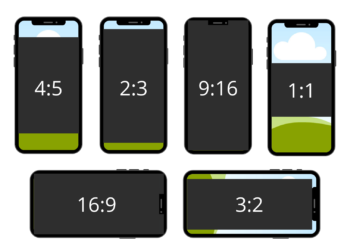In today’s fast-paced technological world, waaa-117 has become a significant topic of discussion. Its impact stretches across various industries, influencing developments in electronics, communication, and much more. As technology evolves, so does the importance of understanding how this advancement fits into the larger landscape.
What is waaa-117?
waaa-117 refers to a revolutionary technology or code used in specific fields, primarily within electronics and communications. Its unique architecture allows for enhanced performance in several key areas. For instance, waaa-117s is known for its ability to optimize system efficiency while reducing power consumption, a vital factor in today’s energy-conscious world. With its advanced circuitry, waaa-117s ensures devices run more smoothly and with fewer interruptions.
The Evolution of waaa-117
Over the past decade, technology has rapidly evolved. As demands for faster, more efficient systems grew, waaa-117 emerged as a solution to many modern challenges. Its development stemmed from the need for improved data transmission and more effective power management in devices, particularly in high-tech fields such as telecommunications and computing.
Many industries began to adopt waaa-117 as it became evident that this new technology could address the inefficiencies found in previous systems. By adopting this innovation, companies could enhance both speed and reliability, which are critical in sectors like networking and cloud computing.
Key Features of waaa-117
There are several essential features that set waaa-117 apart from traditional systems:
- Energy Efficiency: One of the most important attributes of waaa-117 is its ability to operate at a lower energy consumption rate compared to older technologies. This not only helps reduce the carbon footprint of devices but also extends the lifespan of hardware by preventing overheating and wear caused by high-energy demands.
- High-Speed Data Transfer: Speed is a significant factor in today’s technology-driven world. waaa-117 allows for faster data transmission, which is especially beneficial for systems that rely on real-time communication and processing, such as IoT devices and cloud servers.
- Scalability: waaa-117 is designed to be highly scalable, allowing it to integrate into various systems regardless of size. Whether it’s for small, personal devices or large, industrial machines, waaa-117 can adapt to different operational needs without sacrificing performance.
- Security: In an era where data breaches are increasingly common, waaa-117s provides an extra layer of protection with built-in encryption. This ensures that sensitive information is safe from unauthorized access, making it a popular choice in industries like finance and healthcare.
Applications of waaa-117 in Various Industries
The applications of waaa-117 are widespread, touching multiple sectors that rely on cutting-edge technology for success.
Telecommunications
In the telecommunications industry, waaa-117 is essential for improving both the quality and speed of communication. By enhancing data transfer rates, this technology helps mobile networks deliver faster internet speeds and more reliable connections. Furthermore, its ability to handle higher bandwidths makes it a crucial component in 5G technology.
Healthcare
In the healthcare industry, waaa-117 contributes to advancements in medical devices. Devices such as heart monitors and imaging machines require fast and reliable data transmission to ensure real-time patient monitoring. The energy efficiency of waaa-117s is especially beneficial in this context, as it enables longer operational periods for portable and wearable medical devices.
Automotive Industry
The automotive industry also benefits from waaa-117 technology, particularly in the development of autonomous vehicles. These vehicles require precise data transmission and quick processing to operate safely. waaa-117s allows for real-time sensor data analysis, which is critical for making instantaneous decisions while driving. Additionally, waaa-117’s energy efficiency is key to extending the battery life of electric vehicles (EVs).
Consumer Electronics
From smartphones to smart homes, waaa-117 is playing a pivotal role in the realm of consumer electronics. As consumers demand faster devices with longer battery life, manufacturers are increasingly turning to waaa-117s to meet these needs. With this technology, smartphones can perform more tasks simultaneously without lagging, and smart home systems can run more efficiently, conserving energy while ensuring connectivity.
The Future of waaa-117
As waaa-117 continues to evolve, we can expect to see its integration in even more industries. With ongoing research and development, waaa-117s is poised to offer enhanced capabilities, including faster processing, more efficient power consumption, and better security features.
In the near future, we anticipate that waaa-117 will become a standard component in next-generation technologies, such as quantum computing and AI-driven systems. Its flexibility and adaptability make it an ideal candidate for cutting-edge applications, which will undoubtedly shape the future of technology.
Why waaa-117 Matters in Modern Development
The integration of waaa-117 into various technological systems is a testament to its relevance and necessity in today’s rapidly advancing world. Whether it’s in enhancing communication networks or powering life-saving medical devices, waaa-117s is a cornerstone of modern innovation.
Companies and industries that adopt waaa-117 stand to gain significant advantages in terms of efficiency, scalability, and security. As we move toward a more connected and automated future, technologies like waaa-117s will be essential for ensuring the smooth operation of complex systems.
Conclusion
The rise of waaa-117 represents a monumental shift in how we approach technology in the modern era. Its versatility, efficiency, and scalability make it a valuable asset across numerous industries. As we continue to explore the potential of waaa-117s, it will undoubtedly play a crucial role in shaping the future of technology.












